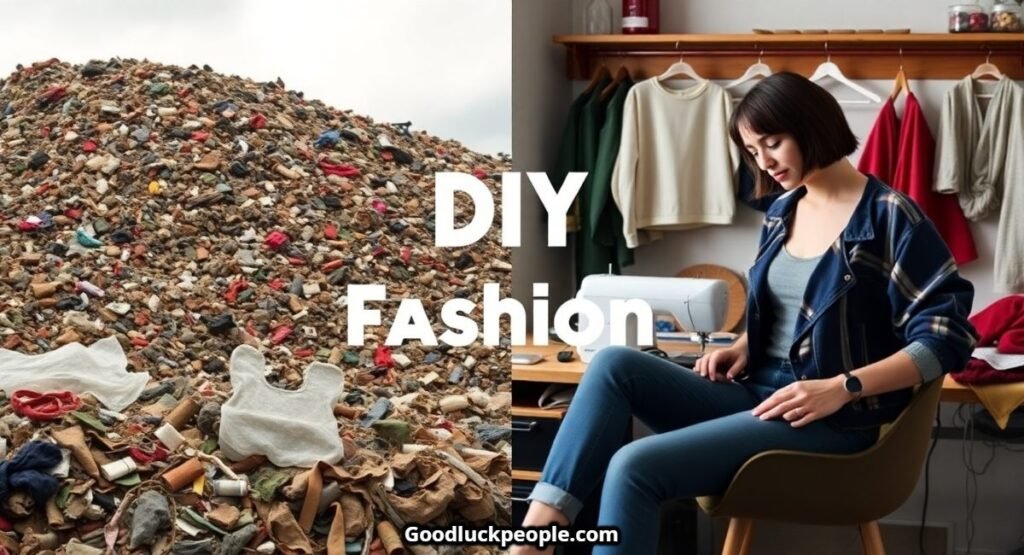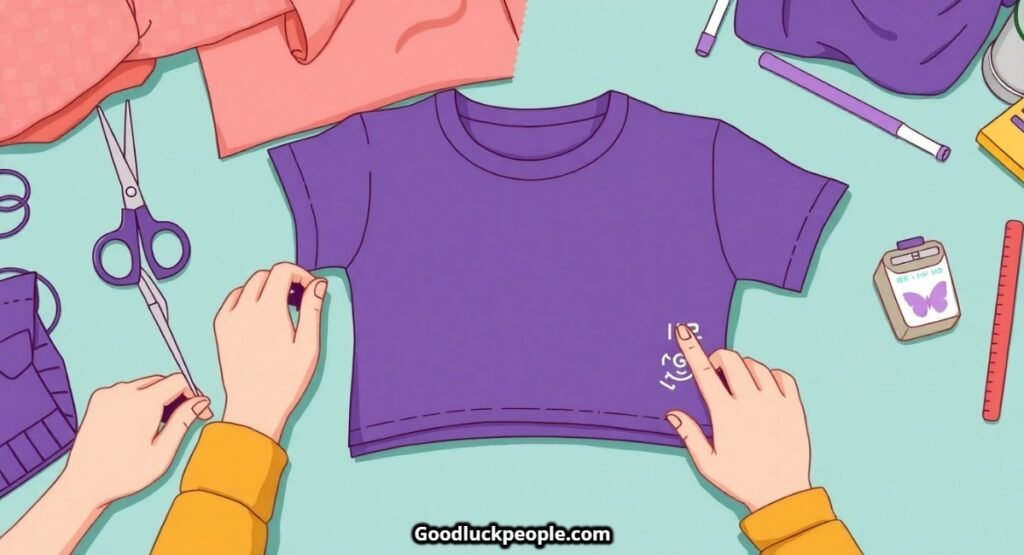Imagine transforming an old pair of jeans into a trendy tote bag or revamping a thrift-store blazer into a stylish cropped jacket. DIY fashion is more than just a creative hobby—it’s a growing movement toward sustainability, self-expression, and mindful consumption.
With fast fashion producing billions of garments annually, many consumers are turning to DIY fashion as an ethical alternative. Whether you’re a beginner or an experienced creator, this guide will show you how to start your DIY fashion journey, the industry trends driving this movement, and real-life examples of how DIY fashion is making an impact.
Why DIY Fashion is Gaining Popularity?

1. A Stand Against Fast Fashion
The fashion industry is responsible for 92 million tons of textile waste per year, according to the Ellen MacArthur Foundation. DIY fashion combats this by promoting upcycling and repurposing, reducing landfill waste, and encouraging ethical production. Fashion journalist Lucy Siegle famously said, “Fast fashion isn’t free. Someone, somewhere, is paying the price,” highlighting the global nature of the fashion industry and the varying roles of each country in fashion designing.
Case Study: Patagonia’s Worn Wear Initiative
Brands like Patagonia are embracing the DIY movement through programs like Worn Wear, which encourages customers to repair their clothes instead of discarding them. By offering repair guides and repair services, Patagonia has set a precedent for sustainable fashion practices.
2. Cost-Effective and Budget-Friendly
Why spend hundreds on designer clothing when you can create high-fashion pieces at home? DIY fashion lets you thrift, upcycle, or craft your own wardrobe for a fraction of the price. A survey by ThredUp found that 70% of Gen Z shoppers prefer secondhand or upcycled clothing over fast fashion.
Case Study: Upcycling Business Success
Entrepreneur Sam Nowell (@samnowellstudios) turned his passion for upcycling into a thriving business by selling repurposed streetwear on Instagram and Depop. His brand, built on sustainability and unique designs, attracts thousands of eco-conscious buyers worldwide.
3. Personalized & Unique Style
DIY fashion allows you to create exclusive, one-of-a-kind outfits that reflect your personality. From embroidery to fabric painting and patchwork, there’s no limit to customization.
Industry Insight: Luxury Brands Embracing DIY Fashion
Even high-end fashion brands are recognizing the power of customization. Gucci and Dior now offer DIY services, letting customers personalize jackets, bags, and shoes—a sign that DIY culture is influencing mainstream fashion.
4. Mental Health Benefits
Creating something with your hands is more than just fun—it’s therapeutic. Dr. A. Bresky, a neuroscientist, found that engaging in creative activities like sewing improves memory function by up to 70%. The sense of accomplishment from upcycling an outfit is unmatched.
Case Study: DIY Fashion as Therapy
During the COVID-19 lockdowns, fashion designer Jeremy Salazar (@happyxloco) began reconstructing secondhand clothes as a form of stress relief. His unique creations gained popularity, turning his mental health outlet into a successful fashion brand.
How to Get Started with DIY Fashion?

Transform an Old T-Shirt into a Crop Top (No Sewing Required!)
What You Need: An old T-shirt, scissors, a ruler
- Lay the T-shirt flat and decide how short you want it.
- Mark a straight line across the shirt using chalk or a ruler.
- Cut along the line.
- (Optional) For a fringe effect, cut small vertical slits at the bottom.
- Stretch the fabric slightly for a relaxed look.
- Wear your new crop top and show off your DIY skills!
Pro Tip: Add fabric paint, tie-dye, or iron-on patches for extra flair!
Natural Dyeing: Eco-Friendly Fashion Hacks
What You Need: Light-colored clothing, natural dyes (turmeric, beetroot, avocado pits, onion skins), a large pot, salt/vinegar (for color setting)
- Boil water in a large pot and add your chosen natural dye.
- Soak the fabric in water, then place it in the dye bath.
- Simmer for 30 minutes (or longer for deeper colors).
- Remove the fabric, rinse with cold water, and let it dry.
Did you know? Avocado pits create a soft pink shade, and turmeric gives a vibrant yellow hue!
DIY Patchwork Jeans (Embrace the Y2K Trend!)
What You Need: Old denim scraps, needle & thread (or fabric glue), scissors
- Cut denim scraps into fun shapes (stars, hearts, or classic patches).
- Arrange them on your jeans and pin them in place.
- Sew or glue the patches onto your jeans.
Pro Tip: Use different fabrics like plaid, corduroy, or lace for a textured look.
Brands Supporting DIY & Sustainable Fashion

Looking for inspiration or materials? Check out these ethical brands:
- BOTTIES – DIY shoe kits for stylish, eco-friendly footwear.
- The New Denim Project – Fabric scrap packs perfect for patchwork.
- Natural Earth Paint – Non-toxic paints for fabric customization.
Fun Fact: Many luxury designers are embracing DIY fashion. Brands like Stella McCartney and Patagonia encourage customers to repair and customize their pieces instead of replacing them. If you’re interested in how sneaker culture ties into this trend, check out our article on why sneaker culture is so popular.
Social Media & DIY Fashion: How to Share Your Creations

Social media has played a massive role in the DIY fashion boom. Platforms like TikTok, Pinterest, and Instagram are filled with upcycling tutorials and thrift flips.
Want to go viral?
- Use hashtags like #DIYFashion, #ThriftFlip, #SustainableStyle
- Post before-and-after transformation videos
- Share your process to inspire others
Many creators have even turned DIY fashion into a business, selling handmade clothes on Etsy, Depop, and Instagram.
Final Thoughts: Why DIY Fashion Matters
DIY fashion isn’t just about making clothes—it’s about sustainability, creativity, and self-expression. Whether you’re saving money, reducing waste, or enjoying a new hobby, the DIY approach empowers you to take control of your wardrobe and contribute to a more sustainable future.
So, what’s your first DIY project going to be? Share your ideas in the comments below!

